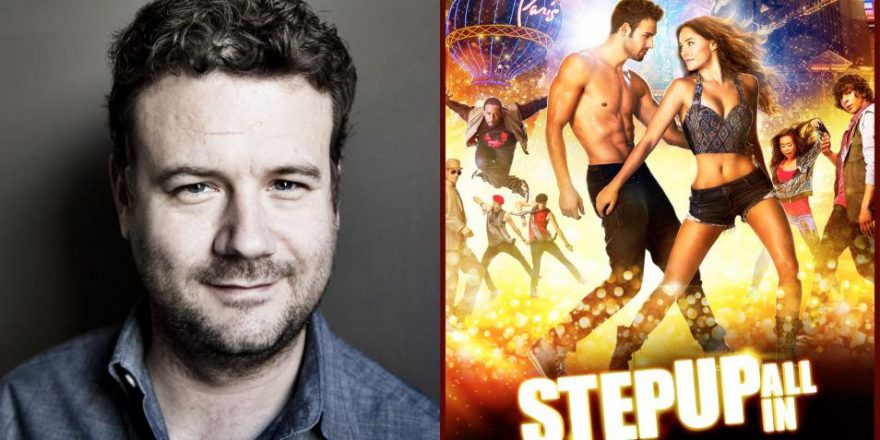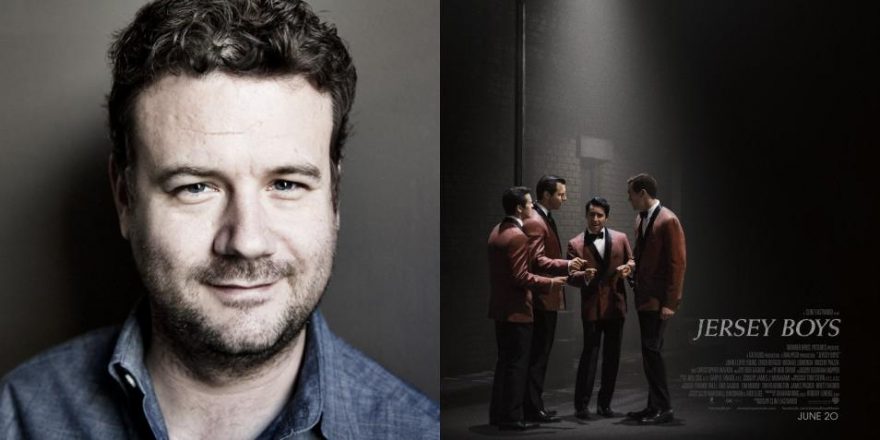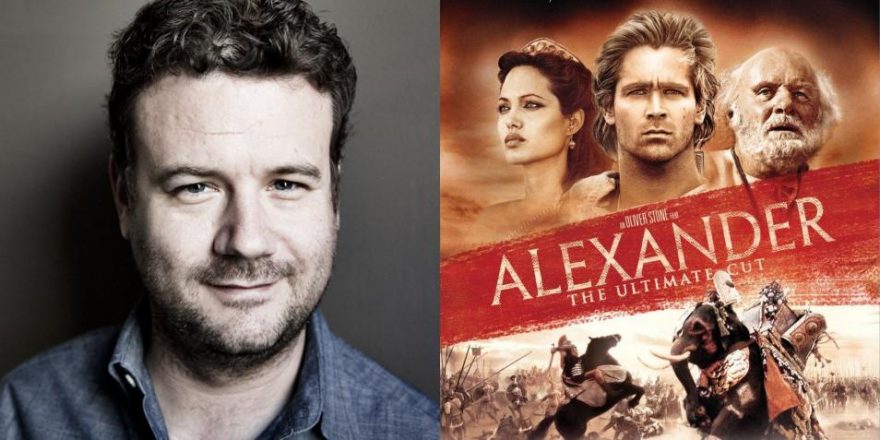In the last few years, a constant lament I’ve heard from both filmmakers and fans is that CGI has robbed the movies of their potential to truly inspire awe in the viewer. The ability to create thousands of extras with mere pixels, or to demolish entire cities, means that something like Noah can never be as magical an experience as DeMille’s The Ten Commandments, and that Guardians of the Galaxy will always feel a little more antiseptic and mechanical than the handmade and slightly funky Star Wars. Back in DeMille’s day, and in the pre-digital phases of Lucas, Spielberg and Zemeckis’ careers, audiences would see jaw-dropping effects and ask, “How did they do that?” Nowadays we never ask that question. We know how they did it — they did it on a computer.
So is it possible to elicit a genuine sense of awe from an audience these days? Obviously the answer is yes, and in many ways — most of them having less to do with the technical side of film than with content. Boyhood, for example, seems to be inspiring quite a bit of rapturous awe in just about everyone who sees it, not only for the audacity of its logistical experiment but for the way in which it subtly, beautifully captures both the magic and the banality of everyday life. And the great auteurs are still capable of dazzling us with the scale of their ambition and their confrontational, transgressive approaches — I’m thinking here of Scorsese and The Wolf of Wall Street or Tarantino and Django Unchained.
But — and here’s the paragraph where I’ll probably lose all credibility and half of my readers — one doesn’t have to breathe the rarefied air of great artists like Linklater, Scorsese and Tarantino to have a transcendent experience at the movies. One need look no further than the Step Up films which, to my mind, have retained the cinema’s power to awe the viewer in ways that special effects-oriented films no longer can. They do this in the same way as classic Fred Astaire and Gene Kelly musicals, or Buster Keaton and Harold Lloyd’s silent comedies: by turning the human body itself into a special effect.
The “how did they do that?” reaction one can no longer have to a natural disaster or a battle between flying superheroes is still possible in a film like 2012’s Step Up Revolution, in which men and women, unaided by CGI, contort themselves into the most unlikely, amazing and expertly choreographed positions dozens of times in the space of a few minutes. That movie, the fourth and best in the franchise, is jammed with positively stunning set pieces of surprising scope and originality, in which dozens of dancers pull off seemingly impossible physical feats, all flawlessly synchronized, in conjunction with camerawork that accentuates the performers’ mastery of their space. In the first Step Up (2006), the love story between the two leads succeeds not because of the writing but because of the sheer perfection of the dance sequences — we know the characters belong together because of the sheer beauty of their movement together.
It’s that movement that, in my opinion, renders any criticism of the Step Up movies on the level of narrative somewhat irrelevant. Are the stories in them dumb and obvious? Sure, though I don’t know if they’re any dumber than the scripts for a lot of so-called “classic” musicals from past decades. (Have you watched Carousel or South Pacific lately? They make Step Up 2: The Streets look like Chinatown.) The Step Up movies essentially all employ the same formula of following a love story between two antagonistic dancers via a structure that alternates between agonizingly stilted dramatic scenes and invigorating, highly energetic and stylized musical numbers. These numbers, particularly in the first and fourth Step Up movies, achieve something that gets at the heart of cinema’s most visceral and primal pleasures, combining movement within the frame, movement of the camera, light, color, editing, sound design and music to create a complex sensory experience that’s truly elevating and inspiring — if one is willing to give oneself over to it.
Of course, the problem here is that because so much of what comes between the musical numbers in the Step Up films is bland at best and ridiculous at worst (or is it bland at worst and ridiculous at best?), most sophisticated viewers aren’t willing to give themselves over to the movies — and thus miss the fact that when it comes to the dance sequences, these actually are sophisticated movies made with care and thought by true artists. Are they masterpieces? Not by a long shot. But if you want to dismiss musicals that consist of exquisite song-and-dance sequences strung together by cliché-ridden or inconsequential stories, you’d better be ready to send not only Rodgers and Hammerstein to the trash bin but also A Hard Day’s Night, a film that recently underwent a much celebrated restoration complete with Criterion Blu-ray coronation, and which I (here’s where I lose the handful of film buffs still reading) think is both dumber and less cinematically accomplished than just about any of the Step Up opuses.
As an omnivorous movie fan who loves Kiarostami and Ninja III: The Domination equally, the Step Up movies are actually kind of made for me: they provide the pleasures of both good movies and good bad movies all in one. Invariably when watching a Step Up film, I find myself transported by the elegance of the dance sequences and laughing my ass off at the dopey plots that motivate them. The performances are a particular source of amusement, since actors are usually cast more for their dancing skills than for their ability to string words together. And when a legitimately good actor is cast in one of these films — as when Peter Gallagher appeared in Revolution — watching them either desperately try to retain their dignity or treat the material with the utter contempt it often deserves is hilarious. It’s this combination of disparate pleasures — some intended by the filmmakers and some not — that has led me to see every single one of the Step Up pictures on the big screen.
The fifth and latest entry in the franchise, Step Up All In, is no exception, though it’s the first time I’ve started to think maybe I don’t need to keep rushing out to see these. The movie picks up where Revolution left off, with that film’s Sean (Ryan Guzman) moving from Miami to L.A. to pursue his dream of making it big as a dancer. His break comes via a televised talent competition in Las Vegas, for which he has to assemble a dance crew that consists largely of characters from previous Step Up films, most notably Sean’s love interest Andie (Briana Evigan), the lead from Step Up 2: The Streets. In keeping with Step Up tradition, Sean and Andie clash at first but fall in love on the dance floor, all while going through the motions of an extremely labored plot having something to do with the talent competition being fixed. The movie’s best unintentional laughs come from its clumsily articulated revelations about reality TV not being real at all.
After the expansiveness of Revolution, which saw its dancers spreading out all over Miami to stage massive street dances, I was a little surprised to find that the title of Step Up All In can be taken literally — as in “All Inside constricted spaces.” From the opening credit sequence onward, nearly every musical number in the film crams the dancers into small rooms where they can barely move. And even when they’re in larger spaces, as in a basement rehearsal sequence, for some reason they never spread out. Every time the movie seems like it’s finally going to take off, it never does. A montage in which the characters head out on the town in Vegas — the kind of thing that would have led to a dance extravaganza in earlier Step Up movies — gives the dancers nothing to do beyond harassing a flower saleswoman, while a promising romance between two dancers who communicate via silent gestures is all set-up and no payoff.
Unfortunately, the same can be said about virtually everything in the movie, which begins with a series of dialogue exchanges about how hard it is to make a living as a dancer, then promptly drops that idea from the narrative, only to bring it back at the climax as a substitute for the character development that the entire movie lacks. Not that I’m complaining about the lack of depth in the characters — again, complaining about weak characterizations in a Step Up movie is like complaining about the lack of chainsaw massacres in The Sound of Music. But the weird thing about Step Up All In is that it’s almost nothing but character scenes, as the movie is so cluttered with people, both new and from previous installments. Most of them, however, never get to do anything more than stand around in the background staring off into space, and the ones that do get storylines — like fan favorite Moose (Adam Sevani), the only returning character with any semblance of personality — have to slog through melodramas that are slim even by Step Up standards.
Step Up All In is written by John Swetnam, who is also the writer of Into the Storm, the tornado movie that opened on the same day. The movies are shockingly similar, in that Swetnam does little more than get the audience from one set piece to the next — dance sequences in Step Up All In and tornadoes in Into the Storm — with scenes that provide only the bare minimum required in terms of characters and story. Now, I realize that as someone whose writing credits include Hercules Reborn I probably shouldn’t be throwing stones from my particular glass house, but I was pretty shocked in both cases at how pedestrian the screenplays were. Ironically given my original musings about CGI, the formula works better in Into the Storm – the shit you have to sit through to get to the tornadoes is excruciating, but the disaster sequences are pretty amazing and terrifying. And Swetnam does provide one absolutely brilliant, classic moment in which a character gets swept up in a tornado in his allegedly indestructible tank and realizes he’s toast. The way in which the character comes to that realization is scary and hilarious, and it’s an all-time great movie moment. It may be the only moment like that in Into the Storm, but I guess one is enough — and it’s one more than you’ll find in Step Up All In.






